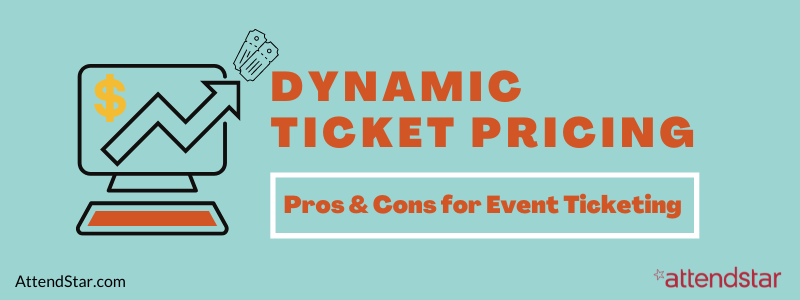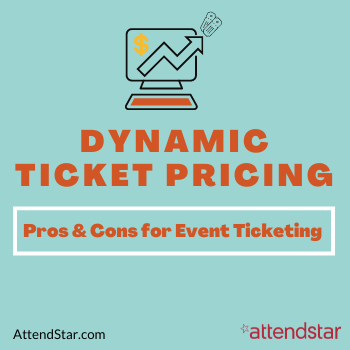
Dynamic ticket pricing isn’t a new concept. Airlines have been using dynamic ticket pricing for years with a simple goal – to optimize the balance between earnings and capacity. That $300 plane ticket you bought may have cost the person in the seat next to you just $99. As consumers, we’ve grown to accept that’s how airline ticket sales work.
But what about dynamic pricing for events? Can it work? The answer is absolutely yes.
For example, if you use the AttendStar ticketing platform to sell tickets for your event, you can preset the price of tickets to increase on a certain date. It’s a simple way to boost sales well before your event with early bird pricing!
Another way to use dynamic pricing for event tickets is to preset the price of the ticket in your ticketing software to increase after a certain number of tickets are sold. AttendStar is building this into its ticketing platform now, and the feature should be available very soon. Contact us for the latest info.
Is dynamic pricing right for your event? Only you can make that decision. There are many benefits that come with dynamic ticket pricing, but don’t go all in on dynamic pricing for your next ticketed event until you fully understand the benefits and challenges. Let’s take a closer look at some of the most common pros and cons.
Dynamic Ticket Pricing for Events – Pros
Dynamic ticket pricing can ensure you generate the most revenue for your event by helping you optimize the ticket prices so you sell as many tickets as possible and as early as possible.
Since everything is automated in your ticketing platform, you don’t have to worry about when is the right time to change prices. You can set everything up in advance and let the data guide your price changes automatically based on ticket sales or dates.
Bottom-line, dynamic ticket pricing helps your events sell out, and you get more money in your pocket in advance of your events – when you need it to cover other budget items.
But that’s not all! Since you’ll end up selling more tickets using dynamic pricing, you’re also likely to generate more revenue through add-on purchases that those additional ticketholders will make. For example, each additional ticket you sell creates opportunities to sell more merchandise, drinks, food, parking, and so on. Those additional purchases will add up quickly.
Dynamic Ticket Pricing for Events – Cons
The biggest negative about dynamic pricing is the potential for negative publicity and word-of-mouth marketing. People don’t like to find out that they spent more for a ticket (or product or service of any kind) than another person did. If word gets out that people paid different amounts for the same type of seats or experiences at your event, they may not be happy about it, and they’ll want to complain.
While consumers have come to accept dynamic pricing for plane tickets, they’re not at the same level of acceptance for event ticket dynamic pricing. With that in mind, make sure you have trained customer support representatives to handle calls or social media posts from angry ticket buyers.
The key to navigate the negativity that can come with dynamic pricing is to be transparent about how you price tickets so everyone’s expectations are set from the very beginning. To that end, explain how and when prices will or could change on your event website and ticket sales page so there are no surprises for buyers.
Key Takeaways for Dynamic Ticket Pricing for Events
Consider this – Forrester Research estimates that profits increase by 25% for ecommerce businesses that use dynamic pricing. Given the fact that airlines continue to use dynamic pricing, it’s not a big leap to assume that dynamic pricing increases profits for event tickets as well.
With all of that said, dynamic pricing could definitely be worth a try for your next event, but it’s just one pricing strategy you can use to increase ticket sales for your events. Contact AttendStar to discuss how to maximize your ticket sales and how the AttendStar ticketing platform can help you reach your event sales and revenue goals.


